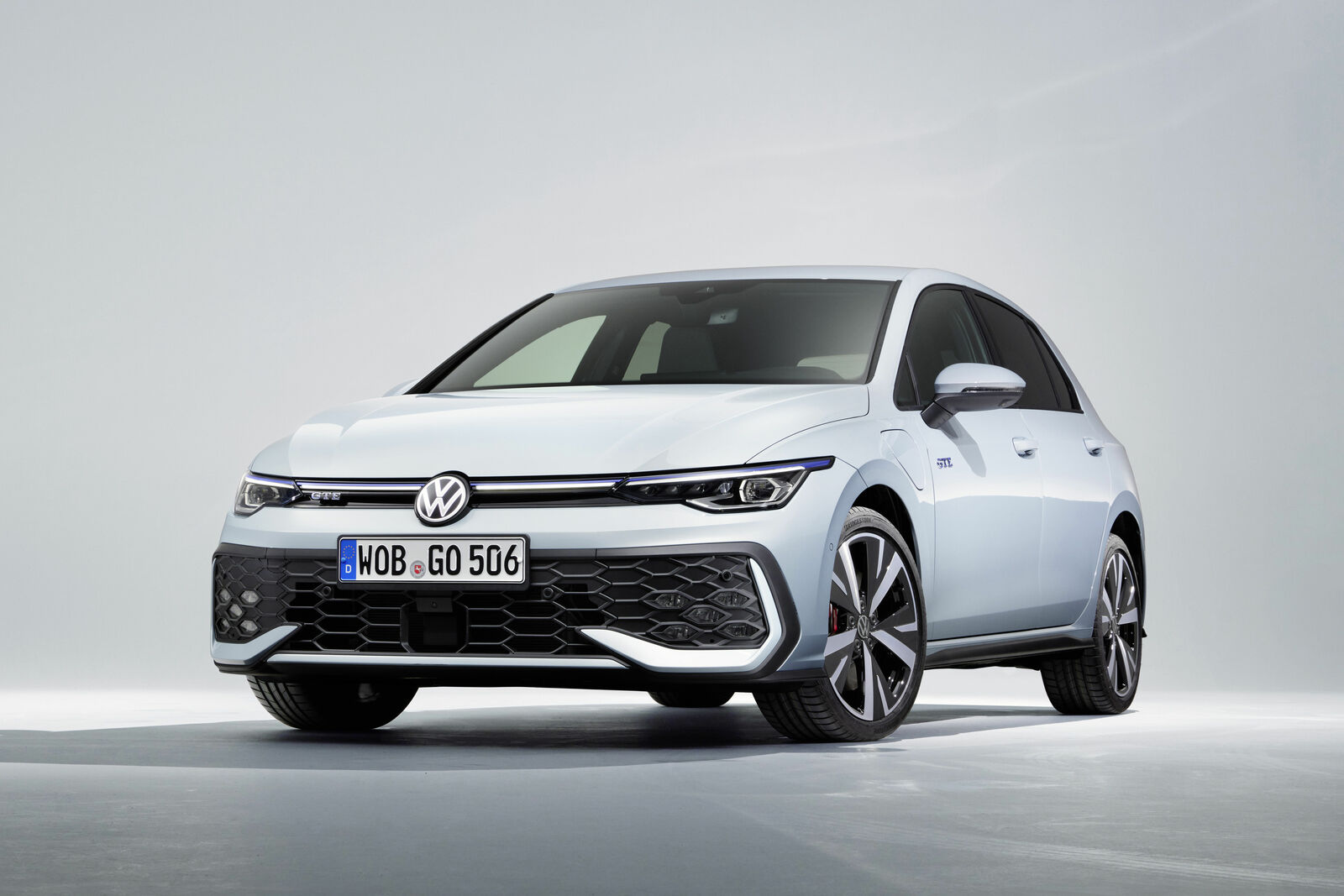Thomas Schäfer, CEO of Volkswagen Passenger Cars: “The Golf has been at the heart of the Volkswagen brand for half a century now, offering affordable mobility for all at the highest technical level. This is precisely what we are now building on with the new evolutionary stage – with even higher efficiency, comfort and quality and a new operating concept. The Golf does not get any better than this.”
Imelda Labbé, Member of the Volkswagen Board of Management for Sales, Marketing and Aftersales: "With Golf, we have written a unique success story. The Golf stands for the Volkswagen brand like no other model. A car for all generations. And this has been the case for 50 years. With the continuous technical development of the new Golf, we are now adding another chapter to this success story."
Revamped front and rear and new light design. The new Golf and new Golf Variant can be recognised by their new front end. Visually defining features include the Volkswagen logo, which is illuminated for the first time on the Golf, and the newly designed LED headlights. The top-of-the-range IQ.LIGHT LED matrix headlights incorporate a new high-performance main beam with a range of up to 500 m.
The IQ.LIGHT 3D LED tail light clusters in both body versions have also received a new design.
New infotainment landscape and ChatGPT integration. Inside, the model series features a newly developed, intuitive infotainment system with a free-standing touchscreen (screen diagonal up to 32.8 cm). This has ergonomically optimised and illuminated touch sliders for temperature and volume control at its base.
Also new are the enhanced multi-function steering wheel and new IDA voice assistant. Using natural language, the IDA can be used not only to control functions such as the air conditioning, telephone or navigation system, but also to access online information from all conceivable areas – from weather forecasts to general knowledge questions. The Golf will have the latest infotainment system generation on board in future. This integrates the artificial-intelligence-based chatbot ChatGPT into the IDA voice assistant. Showcased at the CES (Consumer Electronics Show) in Las Vegas at the beginning of January, the feature can seamlessly access the ever-growing database of artificial intelligence. Occupants can interact with the car using natural language and have researched content read aloud to them while travelling.
Parking made easy thanks to new assist systems. Manoeuvring the Golf and Golf Variant is made easier by new assist systems such as the enhanced Park Assist Plus function. When driving past a parking space, it can detect whether the space (parallel or bay) is large enough and starts the parking procedureWithin the limits of the system accordingly. It takes over the steering as well as acceleration and brakingWithin the limits of the system. All the driver has to do is monitor the parking process. In addition, Park Assist Pro will be available for the Golf for the first time, enabling drivers to guide the vehicle in and out of parking spaces with their smartphoneWithin the limits of the system. The vehicle can be driven out of the parking space remotely if the parking space is very narrow, for example. Another new feature is the Area View system – here, a 360-degree all-round view is created by merging four cameras, and the corresponding image is transferred to the infotainment system touchscreen. This makes it easy to see kerbs and parking space markings.
New powertrain range. The new plug-in hybrid drives in the Golf offer increased power and an electric range of about 100 km, and are additionally equipped with a DC quick-charging function. The highly efficient 48 V mild hybrid drives are particularly appealing for drivers who haveno charging wall box at home. A total of nine different options – mild hybrid (eTSI), plug-in hybrid (eHybrid and GTE), turbocharged petrol (TSI) and turbocharged diesel (TDI) – will be available for the product line in the launch phase. The Golf GTI has become even sportier with added power compared to its predecessor. Further Golf derivatives will be introduced successively throughout 2024.
50 years of the Golf – the history of the bestseller
The first series-produced Golf was built at the Volkswagen plant in Wolfsburg at the end of March 1974. The official launch began in May. Prior to this, the Beetle and thus the combination of a rear-mounted engine and rear-wheel drive had shaped the Volkswagen brand for decades. At the beginning of the 1970s, the first Golf – like the Passat, the Scirocco and the Polo – marked the start of a new era: that of the front-mounted engine and front-wheel drive. The modern and safe drive system concept, the great flexibility with a tailgate and folding rear seat backrest, and the design were so convincing that the millionth Golf rolled off the assembly line by October 1976.
But that was just the beginning: in the seven generations that followed, it was always the Golf that made affordable mobility with the highest standard of technology open to everyone. It came with technology such as the controlled catalytic converter and efficient drive systems, and additionally offered safety features such as the anti-lock braking system, airbags or the first all-wheel drive system in the product line. The secret behind the Golf’s success is also down to the fact that the designers transferred the first generation’s DNA to its successors, thereby cultivating the classic Golf design.
Comfort, quality and innovative assist systems gained importance with each generation and continue to set standards today. Over the past 50 years, the Golf has become a high-tech compact class all of its own – this even became known as the ‘Golf class’ after just a few years. The model has won countless awards and comparative tests at home and abroad. Various derivatives such as the Variant, Cabriolet and Sportsvan followed; the all-electric e-Golf and sporty models, with the abbreviation GTI, GTD, GTE, and the flagship Golf R quickly established themselves. The Golf was one of the first cars in the segment to offer assisted drivingWithin the limits of the system via Travel Assist. Another innovation in the Golf was the debut of Car2X technologyWithin the limits of the system, which can provide advance warning of hazards.
To date, more than 37 million Golfs have been sold across eight generations. The Golf is a solid pillar for the Volkswagen brand and is always able to adapt as a driver of innovation. With the new evolutionary stage, the brand is building precisely on that – with enhanced efficiency, comfort and quality and a smart operating concept.
Only consumption and emission values in accordance with WLTP and not in accordance with NEDC are available for the vehicles. Where ranges are stated, the values for consumption and CO₂ emissions depend on the selected vehicle equipment.






